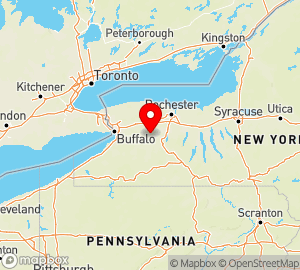Wyoming
Wyoming State Information

wyoming.gov
Area (sq mi):: 97813.56 (land 97100.40; water 713.16) Population per square mile: 5.20
Population 2005: 509,294 State rank: 0 Population change: 2000-20005 3.10%; 1990-2000 8.90% Population 2000: 493,782 (White 88.90%; Black or African American 0.80%; Hispanic or Latino 6.40%; Asian 0.60%; Other 6.70%). Foreign born: 2.30%. Median age: 36.20
Income 2000: per capita $19,134; median household $37,892; Population below poverty level: 11.40% Personal per capita income (2000-2003): $28,460-$32,433
Unemployment (2004): 3.90% Unemployment change (from 2000): 0.10% Median travel time to work: 17.80 minutes Working outside county of residence: 7.90%
List of Wyoming counties:
Wyoming Parks
- US National Parks
- State Parks
- National Wildlife Refuges
- National Scenic Byways
- National Grasslands
- National Forests
Wyoming
Forty-fourth state; admitted on July 10, 1890
State capital: Cheyenne
Nicknames: Equality State; Cowboy State; Big Wyoming
State motto: Equal Rights
State bird: Meadowlark (Sturnella neglecta)
State coin: Golden dollar
State dinosaur: Triceratops
State fish: Cutthroat trout (Salmo clerki)
State flower: Indian paintbrush (Castilleja linariaefolia)
State fossil: Knightia
State gemstone: Jade (nephrite)
State icon: Bucking horse
State mammal: Bison (Bison bison)
State reptile: Horned toad (Douglassi brevirostre)
State song: “Wyoming”
State sport: Rodeo
State tree: Plains cottonwood (Populus sargentii)
More about state symbols at:
wyoming.gov/wyoinfo.asp
wyoming.gov/state/wyoming_news/general/general.asp
More about the state at:
wyoming.gov/about.asp
SOURCES:
AmerBkDays-2000, p. 519 AnnivHol-2000, p. 115
STATE OFFICES:
State web site: wyoming.gov
Office of the Governor State Capitol 200 W 24th St Rm 124 Cheyenne, WY 82202 307-777-7434 fax: 307-632-3909 wyoming.gov/governor
Secretary of State 200 W 24th St Cheyenne, WY 82002 307-777-7378 fax: 307-777-6217 soswy.state.wy.us
Wyoming State Library 2301 Capitol Ave
Cheyenne, WY 82002
307-777-6333
fax: 307-777-6289
www-wsl.state.wy.us
Wyoming
a state in the western USA. The northeastern part of the state is in the Great Plains region, while the remaining, larger part is occupied by the Rocky Mountains (altitude, 4,200 m). Area, 253,600 sq km. Population, 328,000 (1970), of which 56.8 percent is urban (1960). Administrative center, Cheyenne.
Wyoming’s most important branch of agriculture is livestock raising. Large livestock farms, called ranches, are characteristic. On Jan. 1, 1967, there were 1.4 million head of cattle, 1.9 million head of sheep, and 23,000 pigs in the state. Farming is irrigated. About 6 percent of the arable land is tilled. Grasses, sugar beets, oats, and barley are planted on irrigated land. There is logging of coniferous trees. The leading role in the mining industry is taken by the extraction of oil (18 million tons in 1966). The state’s large reserves of coal are worked in a very limited fashion (2.96 million tons in 1965). Uranium ore is mined (at Gas Hills and Crook’s Gain; approximately 1,000 tons of U3U8 in 1966). The state’s deposits of natural gas (6.7 billion cu m), iron ore, and construction materials are developed. Manufacturing, with the exception of oil refining and the production of uranium concentrates, is of local significance. The state’s oil, oil products, and natural gas are pumped through large main pipelines into other states. The famous Yellowstone National Park is on the territory of Wyoming.
M. E. POLOVITSKAIA